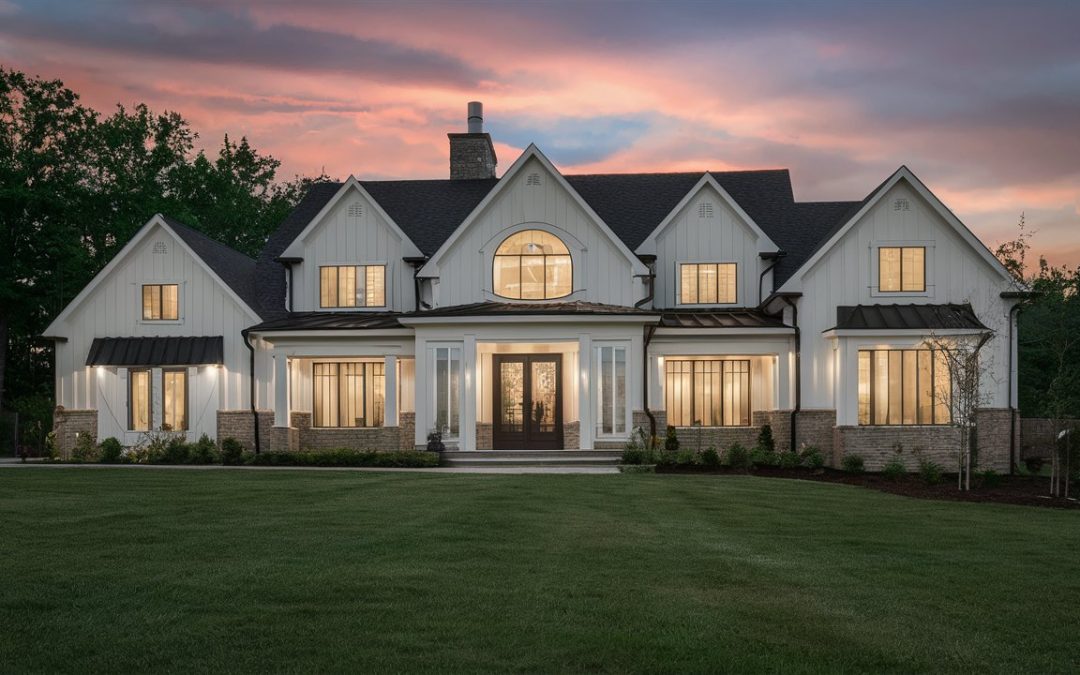
How to Become a Custom Home Builder: Step-by-Step Guide.
Understanding Custom Home Building
Becoming a custom home builder is a rewarding career path that combines creativity, technical skills, and business acumen. This comprehensive guide will walk you through the essential steps to becoming a successful custom home builder, starting your own company, and designing and building custom homes on a budget.
What is a Custom Home?
A custom home is a one-of-a-kind house designed and built to meet the specific needs and preferences of an individual client. Unlike production homes, which are built in large numbers with standard plans, custom homes are unique and tailored to the client’s vision.
How to Become a Custom Home Builder?
Step 1: Gain Relevant Education and Experience
- Education: Pursue a degree in construction management, architecture, civil engineering, or a related field. This formal education provides a solid foundation in building principles, project management, and design.
- Hands-On Experience: Gain practical experience by working with established custom home builders or construction companies. Apprenticeships, internships, and entry-level positions will help you learn the trade and develop crucial skills.
Step 2: Obtain Necessary Licenses and Certifications
- Licensing: Check your state’s requirements for contractor licensing. This often involves passing an exam and meeting experience or education prerequisites.
- Certifications: Consider obtaining certifications from recognized industry organizations, such as the National Association of Home Builders (NAHB). Certifications can enhance your credibility and demonstrate your commitment to excellence.
Step 3: Develop Essential Skills
- Project Management: Learn how to manage projects from start to finish, including budgeting, scheduling, and coordinating with subcontractors and suppliers.
- Design and Planning: Acquire skills in home design and planning to understand architectural blueprints and create custom designs that meet client needs.
- Communication: Develop strong communication skills to effectively interact with clients, subcontractors, and suppliers.
How to Start a Custom Home Building Company?
Step 1: Create a Business Plan
A detailed business plan is crucial for starting your custom home building company. Include your business goals, target market, services offered, and financial projections.
Step 2: Register Your Business
- Business Name: Choose a unique and memorable name for your company.
- Legal Structure: Decide on your business structure (e.g., sole proprietorship, partnership, LLC) and register with the appropriate state authorities.
- Insurance: Obtain necessary insurance coverage, including general liability, workers’ compensation, and builder’s risk insurance.
Step 3: Build a Strong Network
- Suppliers and Subcontractors: Establish relationships with reliable suppliers and subcontractors to ensure high-quality materials and workmanship.
- Clients: Develop a marketing strategy to attract clients, such as creating a professional website, showcasing your portfolio, and leveraging social media.
How to Design a Custom Home?
Step 1: Understand Client Needs
Begin by thoroughly understanding your client’s needs, preferences, and budget. Conduct detailed consultations to gather information on their lifestyle, design preferences, and functional requirements.
Step 2: Collaborate with Architects and Designers
Work closely with architects and designers to create detailed blueprints and 3D models of the custom home. Ensure that the design aligns with the client’s vision and complies with local building codes.
Step 3: Integrate Sustainable and Innovative Features
Incorporate sustainable and innovative features into the home design, such as energy-efficient appliances, smart home technology, and eco-friendly building materials.
How to Build a Custom Home on a Budget?
Step 1: Create a Detailed Budget
Work with your client to establish a realistic budget for the project. Break down costs into categories such as materials, labor, permits, and contingencies.
Step 2: Prioritize Essential Features
Help your client prioritize essential features and allocate funds accordingly. Focus on high-impact areas such as kitchens, bathrooms, and structural elements.
Step 3: Source Cost-Effective Materials
Identify cost-effective materials that do not compromise on quality. Build relationships with suppliers to negotiate better prices and explore alternative options that meet budget constraints.
Step 4: Monitor Expenses Closely
Maintain strict control over project expenses by regularly monitoring costs and making adjustments as necessary. Keep detailed records and communicate transparently with your client about any budget changes.
Conclusion
Becoming a custom home builder requires a combination of education, experience, and a passion for creating unique living spaces. By following this step-by-step guide, you can build a successful career in custom home building, start your own company, and design and construct beautiful custom homes that meet your clients’ needs and budgets. With dedication and careful planning, you can turn your vision of building luxury homes into a reality.
